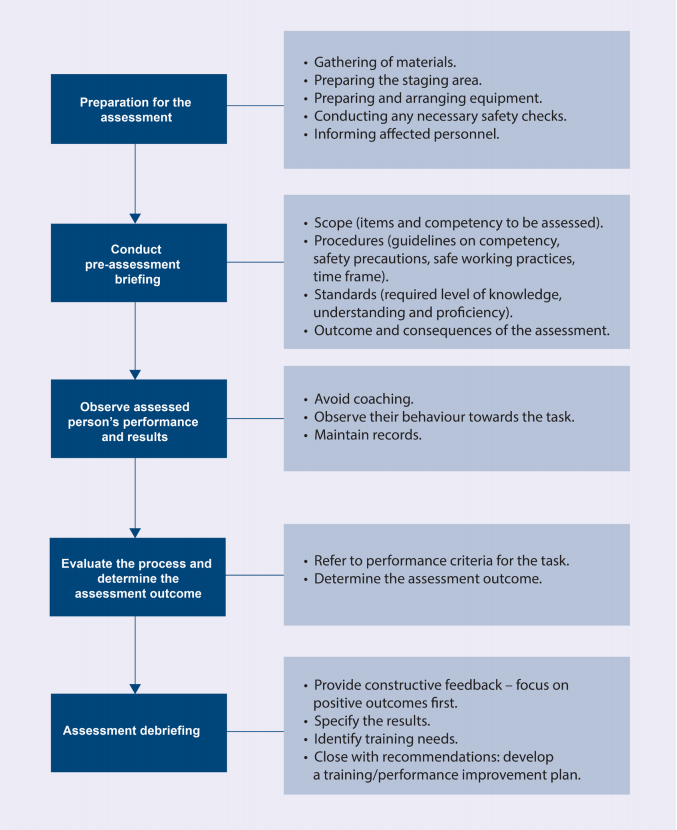Seafarers work in highly risk environments, where skills and abilities play a key role in performance at both individual and organizational level. Competencies can be difficult to assess. As such, OCIMF and Intertanko issued a report presenting a system for assessing competency in seafarers, highlighting that behaviour and attitude are key elements of a positive safety culture. The paper provides guidance on how to assess and verify seafarers’ behavioural competence.
Indicative assessment tools for evaluating technical and behavioral elements
- Psychometrics: Including cognitive ability tests, such as verbal, numerical, spatial and logical reasoning ability tests and personality tests, such as a psychometric personality questionnaire.
- Role play/simulation: Incident simulations can be designed to examine candidates’ ability to deal with specific problems they may encounter in their role.
- Group exercise: Candidates are asked to work collaboratively as a group to address a given topic
- Briefing exercise: This is a prioritization exercise where a candidate is given selection of tasks relevant to the role and is asked to create a schedule and present results. This tests a wide range of skills and knowledge such as decision making.
Key steps for assessment process

Competency assessment definitions
-Exceptional
- Recognised within the company as outstanding in this competency
- Almost always exceeds expected results
- Is a clear role model or mentor and helps others develop this competency
-Exceeds expectations
- Exceeds the expectations of the position
- Frequently exceeds expected results
- May be viewed as a role model or mentor and helps others develop this competency
-Meet expectations
- Demonstrates this competency at a level appropriate for the position
- Meets and sometimes exceeds expected results
- Is reliably and consistently successful
-Needs improvement
- Needs further development or evaluation to consistently demonstrate this competency at a level appropriate for the position
- Needs to strengthen this competency to achieve results
- Does not always learn from feedback, coaching or training
-Unsatisfactory
- Regularly fails to achieve results
- Regularly demonstrates behaviors inconsistent with this competency
- Does not allow through on feedback, coaching or training.
Challenges
It is important that stakeholders from every level be included in the discussions of implementation. Organizations should be aware that:
- This system should be seen as a strategic tool for developing seafarers and should reflect current and future needs
- A phased introduction at the senior level will help to iron out key problems and encourage buy-in from staff in other roles, such as operation-level staff.
- As the system establishes, it is important to review and adjust to ensure it still fits with the company’s vision and also to ensure that particular groups are not being disadvantaged. Implementing the system will also show the company’s maturity in human resource management.
Explore more herebelow:































































